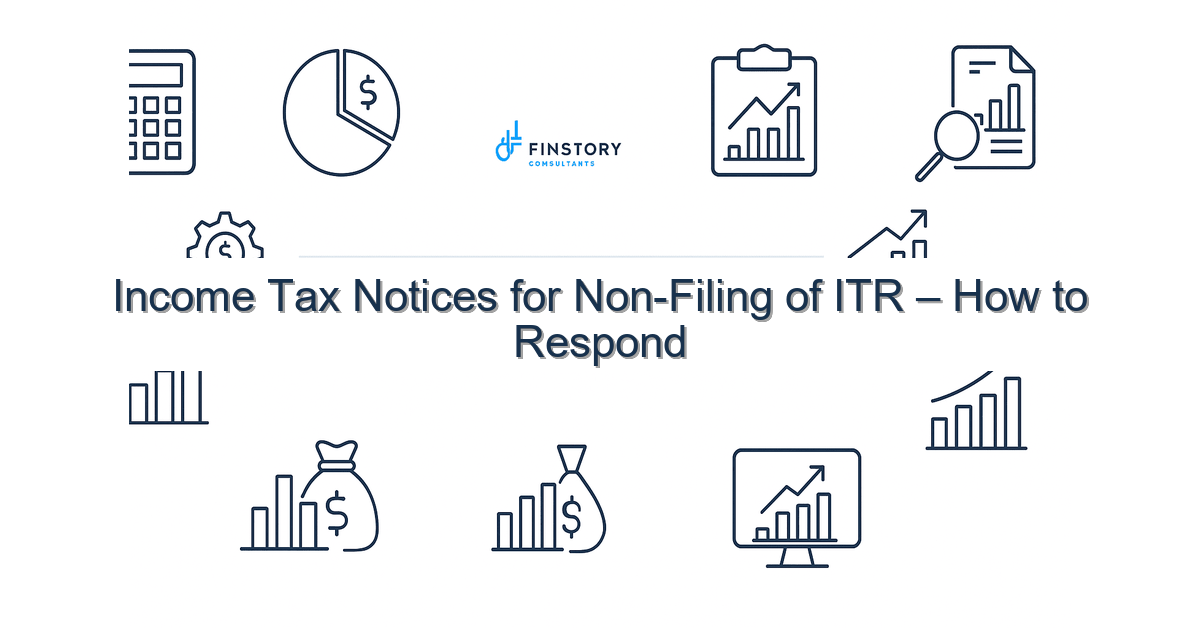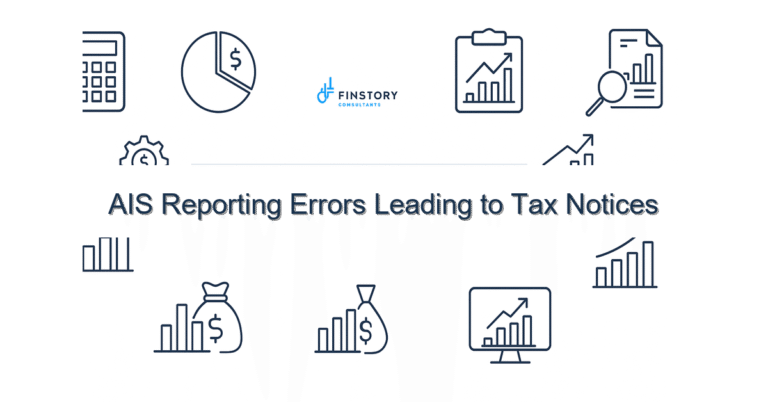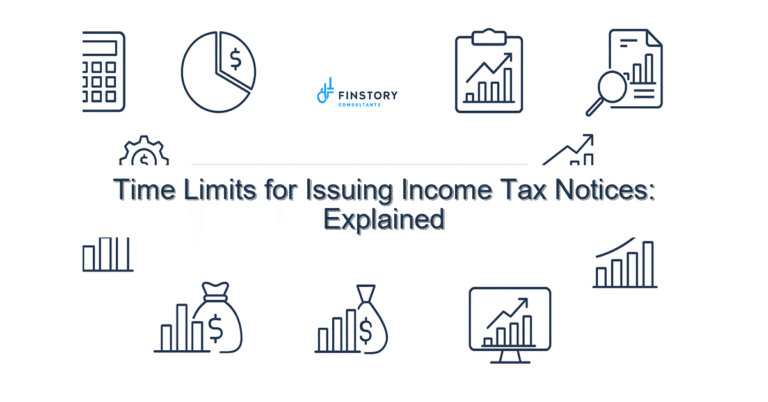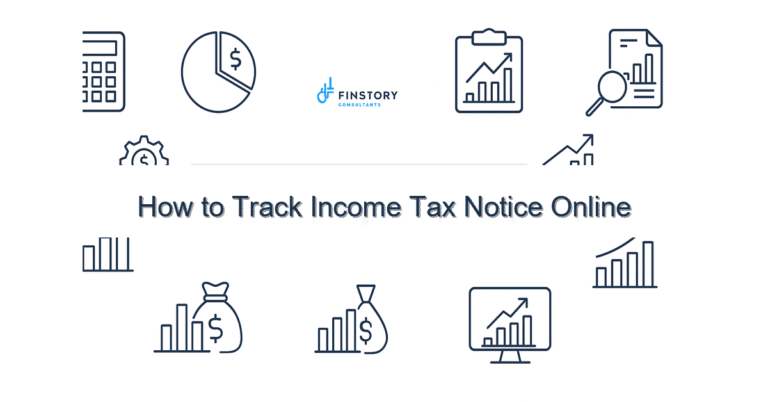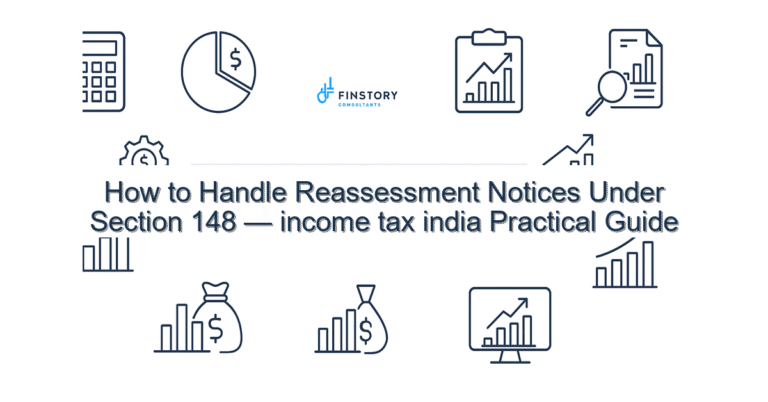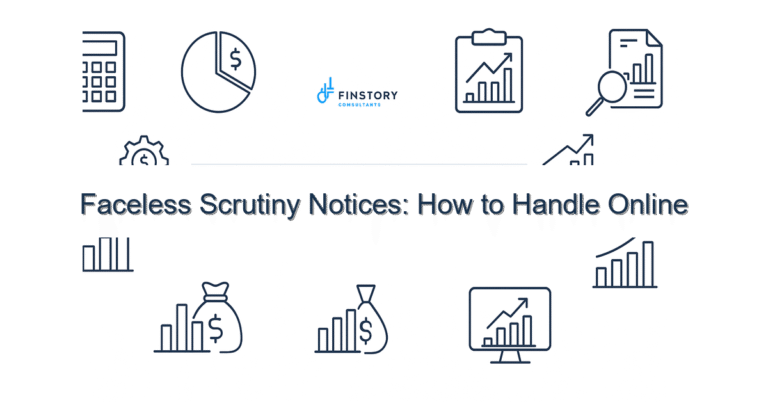Income Tax Notices for Non-Filing of ITR – How to Respond
Receiving an income tax notice for non-filing of ITR can feel alarming—especially when you’re juggling salary, business or startup growth. You’re not alone: many salaried employees, professionals, founders and MSMEs face this, often due to missed AIS entries or TDS not matching.
Summary: The key is to act quickly and calmly: verify the notice, reconcile AIS/26AS and bank records, file a belated ITR if needed, pay outstanding tax/interest, and respond to the notice through the e-filing portal or via a tax professional to avoid escalation.
What’s the real problem in India?
Notices for non-filing often arise because the tax department’s data (AIS/26AS) shows income or tax credits against your PAN while no return exists for the relevant AY/PY. Central systems (CPC/Bangalore, CBDT timelines) automatically flag these mismatches and send notices—sometimes even before you realise there’s taxable income.
- Symptom: You received an email/sms from CPC about non-filing for a particular AY/PY.
- Symptom: High TDS/TCS entries in AIS/26AS that don’t match your filed return or no return at all.
- Symptom: Bank interest, capital gains or professional receipts reported but no corresponding ITR.
- Symptom: A late notice after the ITR filing last date has passed.
What people get wrong
Common pitfalls that convert a simple mismatch into a stressful notice:
- Ignoring AIS/26AS: Tax credits and payments posted by third parties show up there first.
- Assuming low income means ‘no need to file’: even zero-tax profiles sometimes must file if TDS is claimed or specific thresholds are crossed.
- Missing the ITR filing last date and not filing a belated return promptly.
- Not reconciling TDS/TCS and bank entries before responding—this causes repeated notices or penalties.
A better approach
Follow a simple, methodical workflow to resolve notices quickly and reduce future risk.
- Read the notice carefully: note the AY/PY, nature of the alleged omission, and the timeline to respond.
- Reconcile: check AIS/26AS, Form 16/Form 16A, bank statements, invoices and capital gains statements. Match TDS/TCS entries.
- Compute: prepare a draft computation of income (salary, business/professional, capital gains with indexation where applicable, other income) and tax liability—apply deductions up to Section 80C limit, and compare new vs old regime slabs for best tax outcome.
- File & respond: prepare and file a belated ITR on the e-filing portal if required, pay outstanding tax plus interest and reply to the notice with proof of filing/payment or a well-documented explanation.
- Follow-up: track the response on the e-filing portal and be ready to provide additional documents if asked.
Real-world example: A salaried professional received a notice showing high TDS credited against PAN due to consultancy receipts. By checking AIS/26AS and filing a belated ITR within 10 days, they avoided a show-cause escalation and recovered an expected refund of Rs. 22,000 within 45 days.
Quick implementation checklist
- Note notice date, reference number and AY/PY mentioned.
- Download AIS/26AS and the Annual Information Statement from the e-filing portal.
- Collect Form 16/Form 16A, bank interest certificates, and sale/purchase details for capital assets (for capital gains indexation calculations).
- Reconcile TDS/TCS entries against your records and confirm if any employer or payer made a mistake.
- Decide on best tax regime (new vs old regime slabs) and apply deductions such as Section 80C limit where applicable.
- Prepare computation and file belated ITR online (if within permissible period) or file return if not previously filed.
- Pay self-assessed tax and interest (use challan 280) and download payment receipt.
- Respond to the notice on the e-filing portal with your ITR Acknowledgement and tax payment proof.
- Keep scanned copies of all documents and track the case on the portal; set reminders for any follow-ups.
- If unsure, consult a professional—this is often faster and reduces risk of mistakes. See [link:ITR guide] for more help.
What success looks like
- Filing a belated ITR and closing the notice within 30–60 days.
- Lower penalty exposure because tax and interest were paid promptly.
- Faster processing of refunds when the return is complete and reconciled with AIS/26AS.
- Fewer repeated notices by fixing the root cause (e.g., mismatched PAN/TAN, undeclared TDS).
- Improved documentation: reconciled TDS/TCS and robust bookkeeping for future AY/PY.
Risks & how to manage them
- Risk: Penalty or interest. Manage by paying tax and interest upfront and filing promptly.
- Risk: Notice escalation (assessment or survey). Manage by transparent communication and professional representation if needed.
- Risk: Wrong claim of deductions. Manage by keeping proofs for Section 80C limit, HRA, home loan interest, and capital gains calculations (use indexation where applicable).
- Risk: Employer/payer TDS errors. Manage by coordinating with payer to issue corrected TDS certificates or revise returns if required.
Tools & data
Key tools to use right away:
- AIS/26AS and the Annual Information Statement on the Income Tax e-filing portal—your first reconciliation source.
- TRACES and Form 16/Form 16A for TDS/TCS verification.
- Income Tax e-filing portal for filing, responding to notices and tracking CPC communications.
- TDS/TCS tracking tools, accounting software or spreadsheets to reconcile payments and receipts.
- Resources for tax planning such as [link:tax-saving tips] to compare new vs old regime slabs and deductions.
FAQs
Q: I received a notice but my income was below the taxable limit—do I still need to file?
A: If AIS/26AS shows tax credits (TDS/TCS) or specific transactions (like capital gains) for the AY/PY, it’s safer to file a return and reply to the notice with proof. Filing can also help you claim refunds.
Q: Can I file a belated ITR after the ITR filing last date when I get a notice?
A: Yes, you can file a belated ITR within the time allowed under the Income Tax Act (subject to limits for the relevant AY/PY). However, interest and late fees may apply—so act quickly.
Q: What if TDS shown in AIS/26AS is incorrect?
A: First, contact the deductor (employer or payer) to issue a corrected TDS certificate or file rectification on TRACES. If that’s delayed, include an explanation and supporting correspondence when you respond to the notice.
Q: Will filing a belated return guarantee closure of the notice?
A: Filing and paying due tax/interest plus a clear response usually resolves the notice. Complex cases may need further documentation or an assessment; a tax professional can manage follow-ups.
Next steps
If you’ve received a notice, start by downloading your AIS/26AS and checking the details—then follow the checklist above. If you’re unsure about computations, deductions (Section 80C limit), or whether to pick the new vs old regime slabs, professional help speeds resolution and reduces risk.
Work with Finstory. Speak with an Expert for a personalised plan to reduce your tax outgo and stay compliant. Book a free 20-min consultation.
📞 Need help with Income Tax in India?
Book a 20-min consultation with our tax team. Individuals, founders & MSMEs welcome.
Prefer email or phone? Write to info@finstory.net
or call +91 44-45811170.
